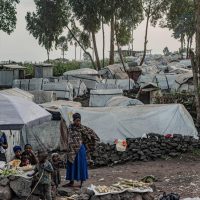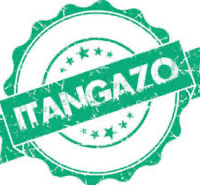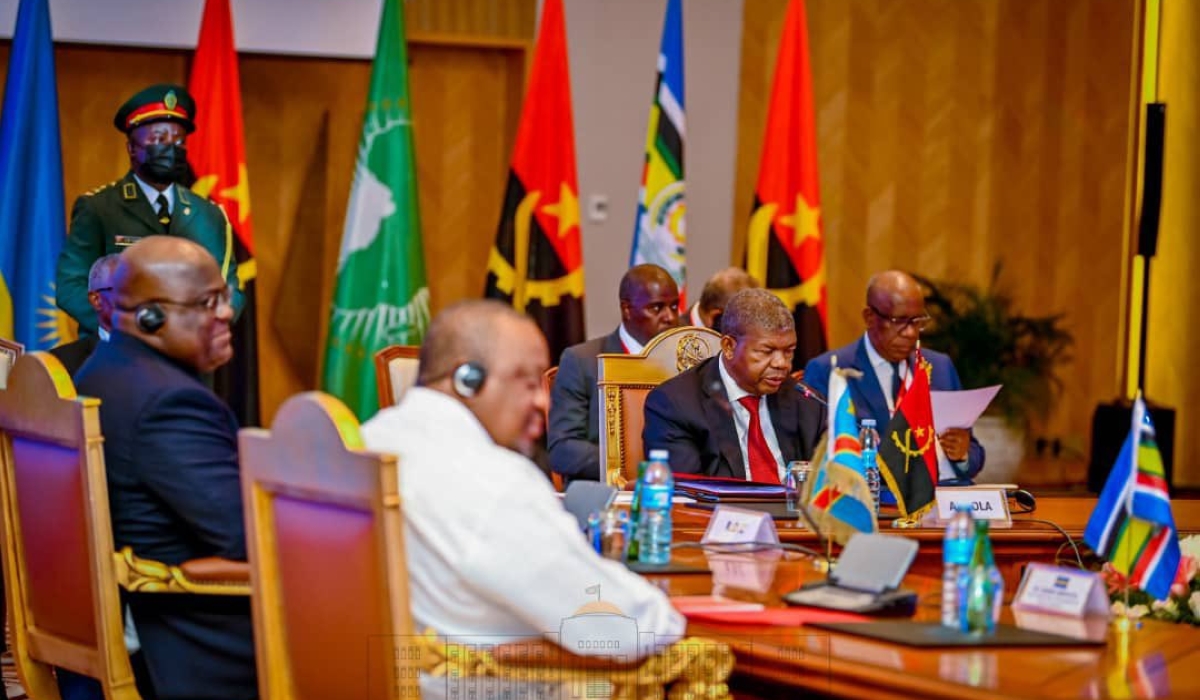Not a month goes by without someone or other on social media, railing against Western interference in Africa, and calling for “African solutions for African problems.” If ever there was a time and place when the term needed to be more than just a slogan, it is now, in the Democratic Republic of Congo (DRC). But if the recently concluded SADC (Southern African Development Cooperation) summit is anything to go by, we are still some way before the words can be little more than a cliché.
To be charitable to SADC, one of the drawbacks of regional organisations, is that every member nation may raise an issue and however preposterous, other heads of state have to give it their undivided attention.
Even the vagaries of regional organisations not withstanding however, there is something a little bizarre, about recent Great Lakes region, summits, supposedly to resolve conflict and instability in the DRC. These meetings have increasingly taken on characteristics of theatre. As in any play or film, a degree of suspension of disbelief is required of the audience, or else they might dismiss the entire work as too absurd to be credible. How is President Tshisekedi able to constantly flout this most basic of rules, and continuously present what are obviously fantasies as reality?
In general, the answer is Congo’s wealth. He dangles it in one hand, while waving complete absurdities in the other. You must believe in one to have the other, and since the world prefers material wealth to any principle, the show goes on, with the people of Congo continuing to pay the heavy price for the world’s cynicism and hypocrisy.
In this particular instant, part of Tshisekedi’s success in turning the leaders of SADC into nodding heads to his destructive, venal power mongering, was that he could take advantage of his position as current chair of SADC, to hold them as a captive audience. That achieved, we are then served with a communique that is entirely detached from reality.
The SADC summit “noted with great concern the unstable and deteriorating situation prevailing in the Eastern DRC, and reiterated its strong condemnation of the upsurge of conflicts and activities of Armed groups…”
Presumably the SADC chairman, Felix Tshisekedi, was in the room, while the summit expressed its great concern. The armed groups his fellow heads of state, rightly condemned, had been working with his government, and were virtually integral to the national army, FARDC (Armed Forces of the Democratic Republic of Congo), initially on an informal basis, but were recently officially unburdened of the label, armed groups or “negative forces”, and instead, formerly invested with the new description of “patriots,” henceforth to be known as “Wazalendo.”
The Wazalendo are the same murderous gangs, whose depravity knows no limits. The same gangs that have preyed upon the people of the DRC for the past two decades, and counting. With official recognition, all this is to be waved aside, as though it never happened, even as the same crimes continue to be perpetrated.
Had this fact bypassed SADC’s leaders, or was there a collective decision to ignore any and all inconvenient facts, in favour of replacing reality, with whatever tickles their DRC counterpart’s fancy? Almost every one of the summit’s resolution flies in the face of logic.
“unwavering support in the fight against armed groups in the Eastern DRC, to pave the way for peace…” Many of these armed groups now wear FARDC uniform, so does SADC propose to take on the DRC army?
“Summit approved the deployment of a SADC force within the framework of the SADC standby force, as a regional response to restore peace and security in the Eastern DRC.”
Had there been an understanding, agreed telepathically perhaps, that no one was to ask how a SADC force would work with a force from the East African Community (EAC) already in the DRC? Or are we take it that SADC now agrees with Tshisekedi, that all out war, is far preferable to peace keeping, creating conditions for a negotiated end to the conflict, something at which the EAC force had made a creditable stab.
The DRC was one of two members of SADC, who are also in the EAC. They agreed the communiques, from earlier meetings, in Luanda, Bujumbura, Nairobi processes, and at the AU. The SADC meeting proceeded as though these summits had not happened, or were an irrelevance.
In essence the SADC meeting seems to have completely disregarded all the earlier summits of Luanda, Bujumbura, dismissing the efforts of the International Conference on the Great Lakes Region (ICGLR), and the EAC, and the AU.
But then curiously, the same summit “approved a SADC common position to have a more coordinated approach, given the multiple deployments under multilateral and bilateral arrangements in the Eastern DRC, and urged the government of the DRC to put in place the necessary conditions and measures for effective coordination amongst sub regional forces and bilateral partners operating in the DRC.”
Had they cared to name them, we would have learned that some of these “bilateral arrangements,” included Russian mercenaries from the Wagner group, Bulgarians of the Agemira company, Romanian former French Legionnaires, Belarusians, all joined by Georgians, to fly and maintain the Russian made Sukhoi aircraft, which we recently saw making incursions into Rwanda.
But even setting aside the mercenaries, and the fact that there is an AU charter prohibiting their use, how does SADC expect to maintain a “common position” when it acts as though the other regional organisations do not exist. The position agreed by the Luanda summit, implemented by the EAC force, was to help create conditions to negotiate a peaceful end to the conflict. Under this agreement, areas taken from FARDC by the M23 rebels, were to be surrendered to the East African force, allowing for negotiations.
Of late, many of these areas, including Bunagana, Sake, Kibumba, Rumangabo, Mushaki, to name only a few, were occupied by the EAC forces. Normal life has returned in these areas. No longer are armed groups extorting money out of communities, calling them “taxes.” No longer do people have to find hiding places in bushes at night, when the armed groups come to rape, kill and pillage. Local administrations are back in the hands of the people themselves.
For the DRC government, however, this constitutes failure. “The EAC troops, who came to restore security in eastern DRC, have failed. Those of the SADC are arriving, pending the fixing of the modalities by June 15,” said DRC minister for foreign affairs, Christophe Lutundula.
From the DRC government’s point of view, return of any semblance of peace and stability in Eastern part of the country, is indeed failure. Had ending the conflict and bringing about peace and stability been the government’s objective, it would have been achieved for the asking. The M23 rebel group stands ready to lay down their arms and negotiate, in return for the restoration of their full rights as citizens of the DRC.
The DRC’s head of state however has a different objective, to stay in power, and peace does not serve that purpose. Perpetual conflict however, does and so, the East African force has been a failure, precisely because it was succeeding.
The question for SADC now, is whether it stands with the success that has been achieved, however modestly, and build on that, or with the DRC President’s desperate need for a war, just to hang on to power.
Unless there is some transcendent strategy hidden between the lines of the summit’s communique, SADC seems to have decided to nail its colours to Tshisekedi’s mast, putting it on a collision course, with EAC, ICGLR, the African Union (AU), and of course, the M23 rebel group, which will undoubtedly fight back, if attacked.
So far, only Namibia has indicated its readiness to send forces to the DRC. Tanzania may simply reiterate that it already has forces there, in the form of the Force Intervention Brigade (FIB), now under the UN, with MONUSCO. Experience has taught the FIB and MONUSCO, to be cautious before contemplating any attack against the rebel group.
In many ways, the allegation that Rwanda supported M23, began in May of last year, after the battles of Shangi, Kivumu. A combined force of MONUSCO, FIB, Mai Mai and FARDC, attacked the rebels’ positions, only to be repulsed, giving rise to UN complaints that M23 fought like “a conventional army”, and not like an armed group. Despite the lack of any hard evidence to the claim, they, and the world, jumped to the conclusion that Rwanda must be aiding the group, and in fact there were Rwandan troops in the DRC.
The Congolese head of state hears only what he wants to hear, not what is agreed in any meeting. When East Africa agreed to send troops to pave the way for negotiations, what he heard, was that the East African force would fight M23, and as a bonus, put the blame for the conflict on Rwanda. We should therefore be in no doubt, that he now expects SADC to give him his war.
It is curious that the SADC meeting did not find it necessary to take time consider Tshisekedi’s demand, in the light of an EAC, ICGLR, and AU supported process already on the ground, and moreover, one that was yielding the desired outcomes.
Yet the summit noted apparently, “with satisfaction” the forthcoming AU organised Summit of the Quadripartite of SADC, EAC, ICGLR and the Economic Community for Central African States (ECCAS), for the “coordination and harmonisation of interventions of actors in the DRC.”
Whenever it takes place, this quadripartite meeting will be the second AU meeting this year, to address the Congo crisis. All the SADC leaders were present at the earlier meeting, and were party to the decisions taken then. That meeting set the AU’s parameters and approaches regional organisations, include SADC, would follow in their efforts to bring peace to the DRC.
The first order of business for the next meeting, may well be the awkward sidestepping of any number of elephants in the room. Among them, most aghast at being ignored, is that Tshisekedi never wanted peace in the first place, and now, ignoring the stipulations of the AU, and all regional organisations, SADC has patted him on the back, to say, there, there, of course you can have your war, here are some troops to help. The next steps will be interesting.
source:KT Press










